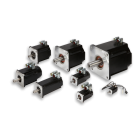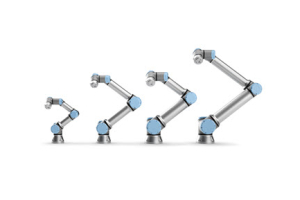Kuka’s compact robots in the KR Agilus series are precise, agile and fast. As agile systems, these five-axis and six-axis handling units feature short cycle times and high repeatability, particularly for pick-and-place tasks.
Synchronous servomotors from Kollmorgen’s AKM series play a major role in achieving this precision. Using collaborative co-engineering, the two companies reduced the installation volume of the motors compared to standard models. The performance of the robots within their rated load range sets new standards for speed, cycle times and energy supply. They can even handle unusual tasks in base and cover installation positions. Kollmorgen developed the custom motors by adapting motors from the standard AKM servomotor series. As fast all-rounders, the robots are suitable for general industrial applications. With a dead weight of 51 kg, the basic model can support loads up to 6 kg. The compact robots are suitable for process automation in the packaging, electronics, food and pharmaceutical industries.
“We made a significant contribution to short cycle times and high precision by adapting our servomotors from the AKM series to Kuka’s specific needs,” said Theo Loy, sales manager at Kollmorgen.
The co-engineering partner adapted the design of the synchronous servomotors to make them fit perfectly in the joints of the robots. That also enabled the engineers to increase the already high power density.
The objective was to find ways to implement custom performance improvements and structural assembly adaptations without sacrificing the advantages of industrial series production. The aim was to optimize standard motors by making controlled modifications. With custom adaptations, such as cable strain reliefs, modified bearing shells, Kuka-specific connector configurations or special drilled holes in the output shaft, the motor manufacturer could reliably maintain the majority of its standardization. But is that still possible when the entire design geometry is fundamentally changed?
Using the smallest servomotor in the AKM series, it had to be made even thinner to fit compactly into the wrist joint of the robot. The co-engineering process started off with 3D models and outside contours, and in the end it involved working with detailed design data.
To make things easier for the customer in the Kuka project, Kollmorgen also incorporated the engineering expertise of its own suppliers, such as a specially adapted motor brake.
“It acts as both a holding brake and an emergency brake,” said Loy. The KR Agilus is the only robot in its class that features Kuka’s Safe Operation function, which drastically simplifies human-robot interaction.
The AKM series of high-acceleration, permanent-magnet servomotors are available in 28 housing and mounting combinations. They also feature reduced energy consumption, high control accuracy and high availability, and they are compatible with all commonly used supply voltages thanks to specifically adapted stator windings.
Information on the AKM Brushless Servo Motors can be viewed here.






